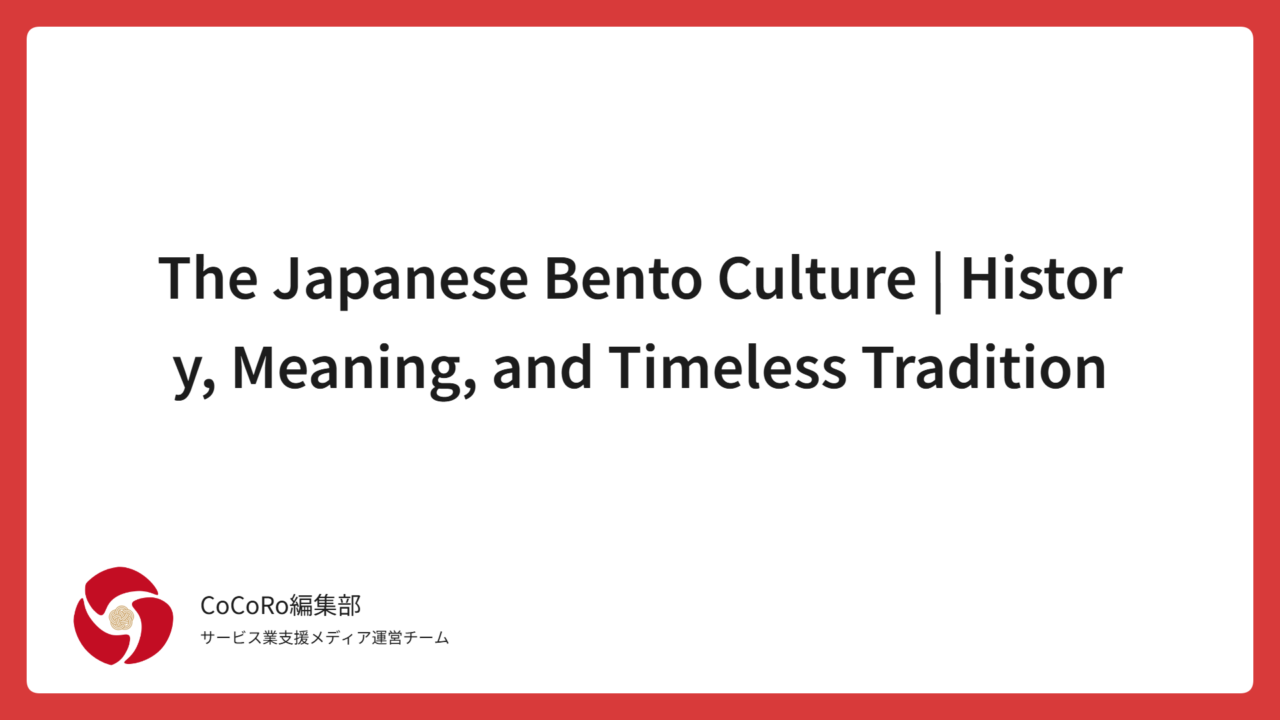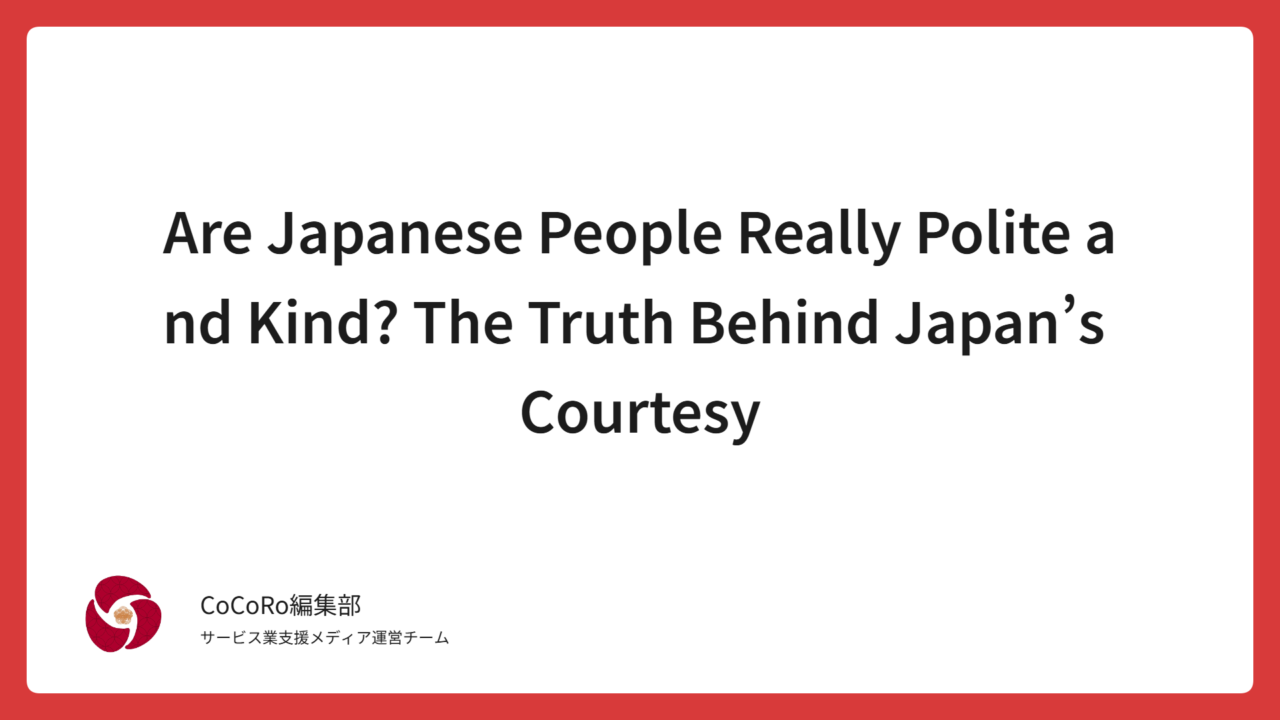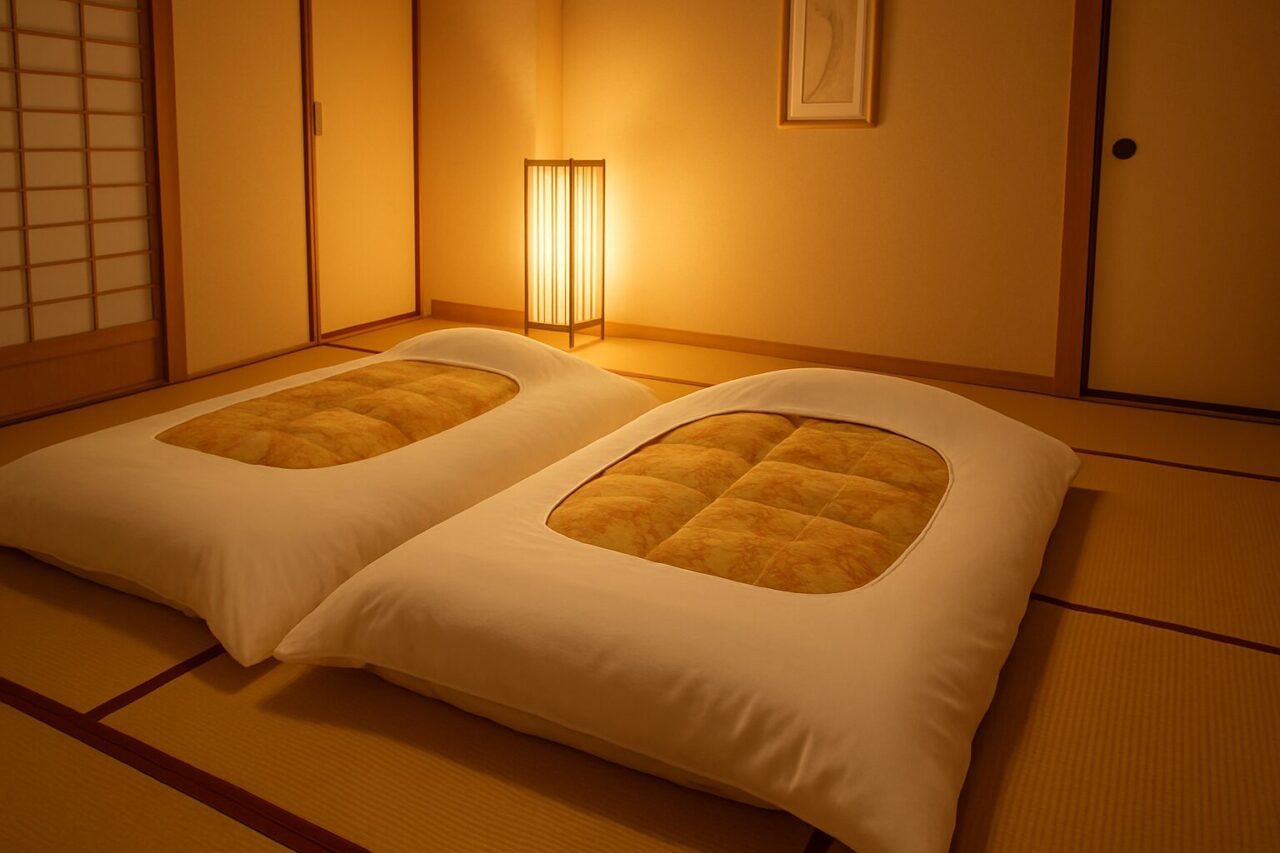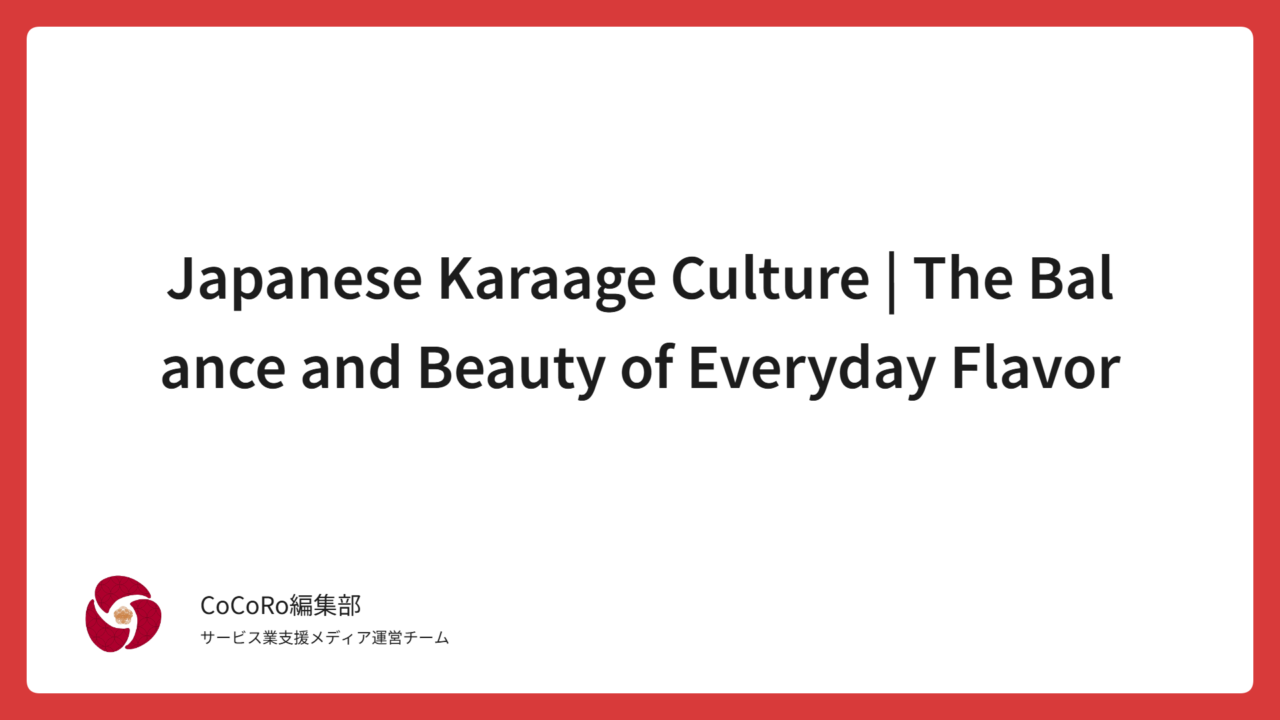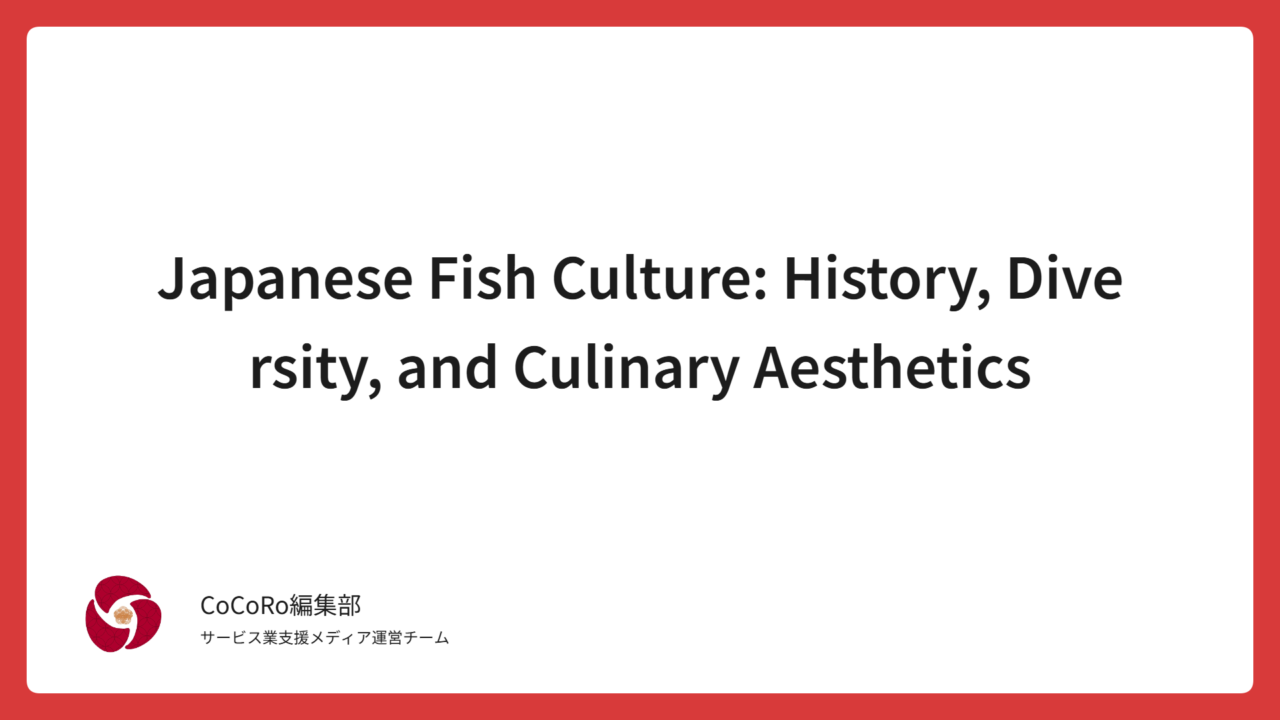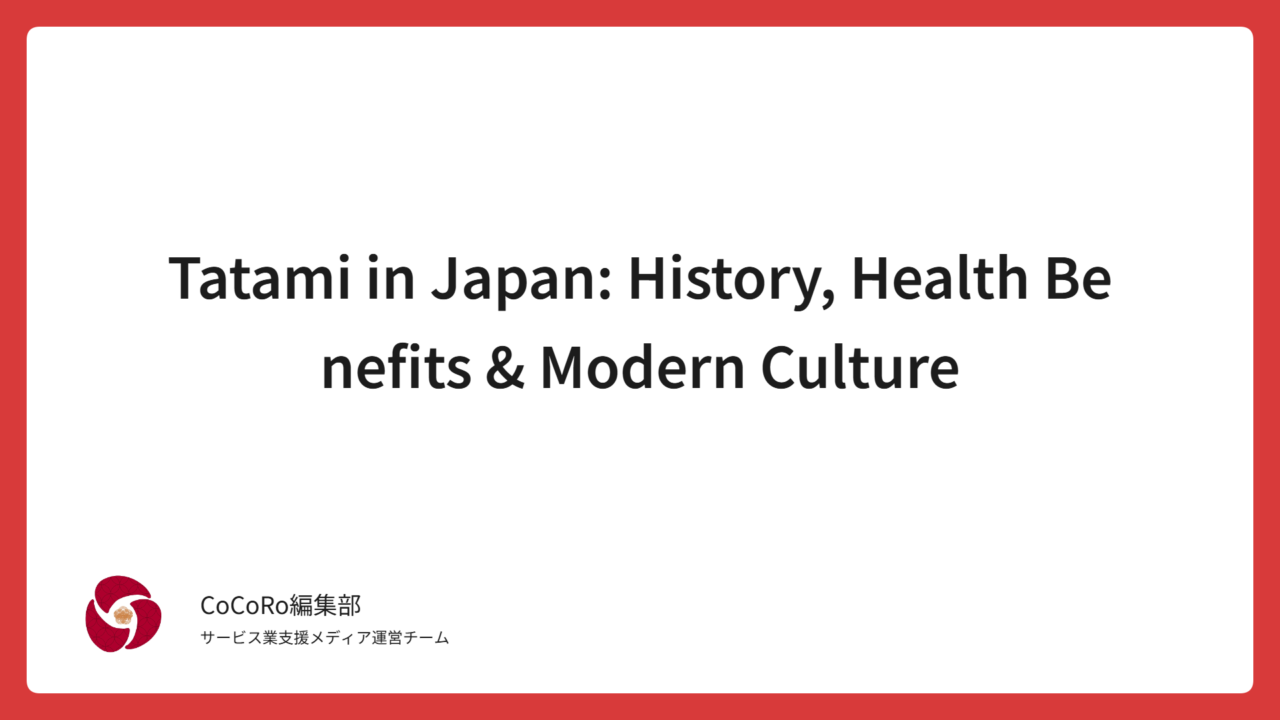
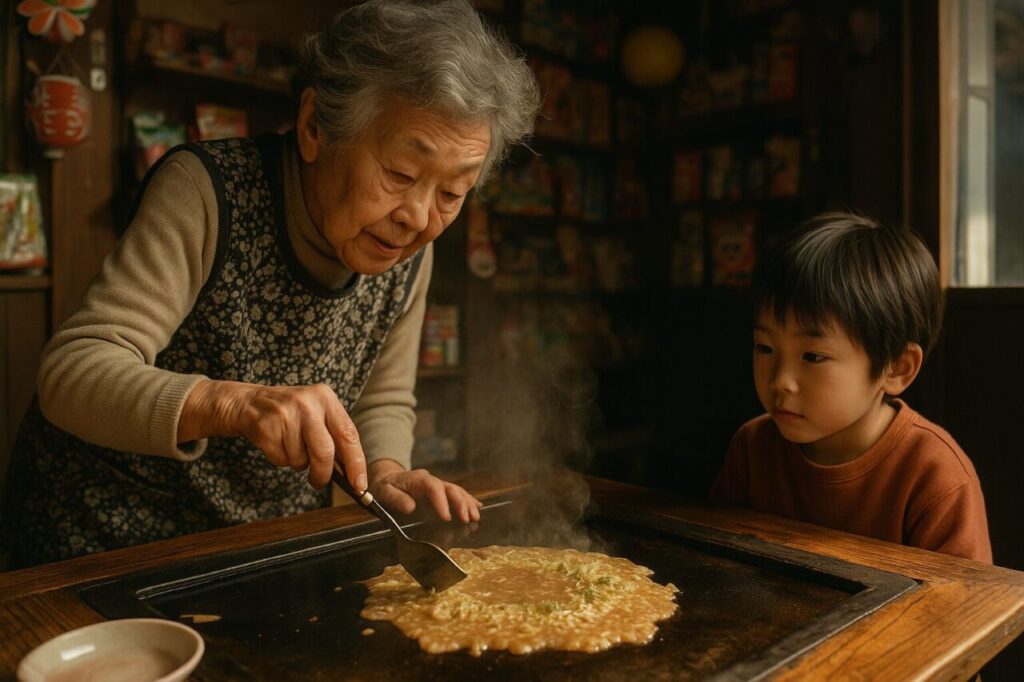
- Chapter 1: What Is Monjayaki — A Taste of Old Tokyo’s Local Culture
- Chapter 2: The Features and Cooking Style of Monjayaki — An Interactive Dish You Cook as You Eat
- Chapter 3: The Era of “100-Yen Monjayaki” — Nurtured by the Dagashi Shop Culture
- Chapter 4: Why Monjayaki Became So Popular in Tsukishima
- Chapter 5: The Philosophy of Cooking — The Dote Style vs. the Free Style
- Chapter 6: Why Monjayaki Captivates Foreign Visitors
- Chapter 7: Conclusion — Blurring the Line Between Cooking and Play
Chapter 1: What Is Monjayaki — A Taste of Old Tokyo’s Local Culture
Many people, even in Japan, have never actually tried Monjayaki.
Even those living in Tokyo often say things like,
“I’ve heard it’s from Tsukishima,” or “Isn’t it similar to Okonomiyaki?”
It’s understandable, since at first glance, Monjayaki looks quite different from most Japanese dishes.
This liquid-style batter poured onto a hot griddle and eaten while mixing is something rarely seen anywhere else in the world.
The charm of Monjayaki lies not so much in eating it, but in enjoying the time spent making it.
Rather than waiting for a finished dish, the real pleasure comes from the process itself —
mixing, spreading, and cooking the ingredients on the hot iron plate.
The aroma, the sizzling sound, and the lively conversation all come together to create the culture of Monjayaki.
In other words, Monjayaki is not just a dish — it is an experience.
Chapter 2: The Features and Cooking Style of Monjayaki — An Interactive Dish You Cook as You Eat
Monjayaki is made from a loose batter of flour mixed with savory dashi broth, combined with ingredients such as cabbage, dried shrimp, squid pieces, and cheese.
Unlike Okonomiyaki, it isn’t shaped into a firm pancake — instead, it’s slowly cooked and eaten directly on the hot griddle as it thickens.
The cooking process is very flexible, but the general steps are as follows.
- Spread the ingredients over the hot griddle and stir-fry them lightly.
- Use the cooked ingredients to form a small circular “wall,” or dote, leaving an open space in the center.
- Pour the liquid batter into the center and cook it while gradually mixing it in.
- When it becomes semi-cooked and slightly thick, scoop it up little by little with a small spatula and enjoy.
This step of creating the “dote,” or circular wall, carries meaning beyond its appearance.
It’s not only to keep the batter from spilling out, but also a kind of ritual that fosters a sense of unity among the people making it.
As everyone gathers around the griddle — one person shaping the wall, another pouring in the batter — conversation and laughter naturally begin to flow.
Instead of waiting for it to be fully cooked, people start eating while it’s still in progress — this idea of “enjoying the in-between” is the very essence of Monjayaki.
It’s less about eating a finished dish, and more about sharing a moment together around the griddle.
Chapter 3: The Era of “100-Yen Monjayaki” — Nurtured by the Dagashi Shop Culture
The roots of Monjayaki can be traced back to a playful activity from the Edo period known as Mojiyaki (“character-grilling”).
At that time, children would pour a flour-and-water batter onto a hot iron plate, drawing letters or pictures as they cooked.
It’s said that the word Monjayaki evolved from Mojiyaki over time.
It was a snack you could enjoy for just a single 100-yen coin.
But what it offered was worth far more than its price.
Children cooked it themselves, laughed together, and sometimes burned it by mistake.
That feeling — that “it’s fun even when you fail” spirit — is the very origin of Monjayaki.
Monja at the dagashi shop was more than just a cheap snack — it was a social space for children.
On that small iron griddle, friendship, imagination, and a playful spirit were all melted together.
Chapter 4: Why Monjayaki Became So Popular in Tsukishima
When people hear the word Monjayaki, most immediately think of Tsukishima.
Located in Tokyo’s Chuo Ward, Tsukishima has become known worldwide as “the town of Monjayaki,” attracting visitors from across the globe.
But why did this particular place become the heart of Monjayaki culture?
One reason lies in the strength of the local community.
Tsukishima was originally a neighborhood where craftsmen and ordinary working-class people lived.
Narrow alleyways and rows of traditional wooden row houses (nagaya) created a tightly knit community where neighbors naturally interacted with one another.
Before long, the number of specialty restaurants in Tsukishima began to grow, and the area eventually developed into a famous landmark known as “Monja Street.”
Even after becoming a popular tourist destination, the spirit that defines the neighborhood has never changed.
Monjayaki remains a shared culture, lovingly preserved by the people of Tsukishima for generations.
Chapter 5: The Philosophy of Cooking — The Dote Style vs. the Free Style
There are, in fact, two major “schools” of Monjayaki cooking.
One follows the traditional “Dote Style,” while the other embraces a freer approach known as the “Free Style.”
The Dote Style involves forming a circular wall on the griddle using cabbage and other ingredients, then pouring the batter into the center.
This method allows the heat to spread evenly and helps the flavors blend harmoniously.
In contrast, the Free Style mixes the batter and ingredients from the start, spreading everything across the griddle.
This approach celebrates spontaneity — enjoying the uneven textures and bits of char that form as it cooks.
This difference is more than just a matter of cooking technique.
It reflects a person’s personality and philosophy — whether they prefer precision and order, or freedom and creativity.
Chapter 6: Why Monjayaki Captivates Foreign Visitors
In recent years, Monjayaki has become increasingly popular among foreign visitors.
The reason is not simply its novelty or visual curiosity.
Rather, many are deeply fascinated by the fact that Monjayaki represents a participatory food culture — one where diners become part of the cooking process itself.
In most countries, food is something that is served to you.
But with Monjayaki, the diners themselves become the cooks.
They mix the batter, adjust the heat, and share the results with friends — a process that gives many visitors a sense of how Japanese culture values cooperation and community.
Another reason for its popularity is that, in places like Tsukishima, visitors can enjoy an authentic local dining experience right in the heart of Tokyo.
On social media, hashtags such as #TokyosLocalFood and #JapaneseIronPlateExperience have helped spread its appeal worldwide.
The sizzling sound of the griddle, the rising steam, and the savory aroma are all celebrated as symbols of “Japanese-ness” — the sensory essence of Japan.
Monjayaki attracts people from all over the world not only for its flavor, but for the joy of making it together — a shared experience that connects hearts beyond language and culture.
Chapter 7: Conclusion — Blurring the Line Between Cooking and Play
The charm of Monjayaki lies in the fact that it doesn’t aim for perfection.
It’s okay if it burns a little, or if it loses its shape.
What truly matters is enjoying the moment together as it unfolds.
And even today, in the downtown streets of Tsukishima, this culture quietly lives on — sizzling gently upon the iron griddles of Tokyo.

